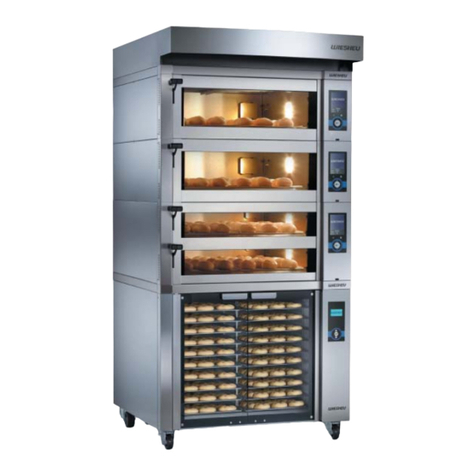
9401-130-001-EN · Version 17-01 · Minimat
Contents
1 Explanation of the User Information 4
1.1 Legends 4
1.1.1 Degrees of danger/symbols 4
1.1.2 Safety information and symbols 5
1.2 Type plate 6
1.3 Excerpt from the EU Declaration of Conformity 7
2 Product Description 8
2.1 Function/overview 8
2.2 Intended use 8
2.3 Reasonably foreseeable misuse 8
2.4 Liability 8
2.5 Technical Specications 9
2.5 Technical specications custom version 10
2.6 Risk of injury / residual risks 11
2.6.1 Obligation of the customer 11
2.6.2 Obligation of the sta 11
2.6.3 General risk of accidents 11
2.6.4 Danger of re/explosion 11
2.6.5 Danger from contact with electrics 12
2.6.6 Danger of burns 12
2.6.7 Water damage 12
2.6.8 Danger of non-ionising radiation 12
2.6.9 Risk of technical damage 13
3 Transportation and Setup 13
3.1 Transport 13
3.2 Unpacking 13
3.3 Installing / dismantling the appliance combination 14
3.4 Place of installation and surroundings 15
3.5 Place of installation and distances 15
3.5.1 Free space next to, above and below the appliance/combined appliance 15
3.5.2 Free space in front of and behind the appliance/combined appliance 16
3.5.3 Distances to sources of heat 16
3.5.4 Distances to safety equipment 16
3.5.5 Combined appliance with enclosure 17
3.5.6. Appliance ID 17
3.6 Connections on-site 18
3.6.1 Electrical connection 18
3.6.2 Plumbed-in water connection for the steaming unit 19
3.6.3 Exhaust air connection 20
3.7 Commissioning 20
3.7.1 Inspections to be carried out before commissioning 21
4 Operation 22
4.1 Switching the in-store baking oven on/o 22
4.2 Opening/closing the door 22
4.2.1 Opening/closing of “manual” Minimat oven door 22
4.2.2 Opening/closing of “electrical” Minimat oven door 22
4.2.3 Emergency unlocking if equipped with electrical door lock 23
4.3 Inserting/removing bakery products 23
4.4 Setting the baking parameters 24
4.5 Removing/installing the tray frames 24
4.6 Tank option 25
4.6.1. Removing/lling/inserting the water tank 25





























